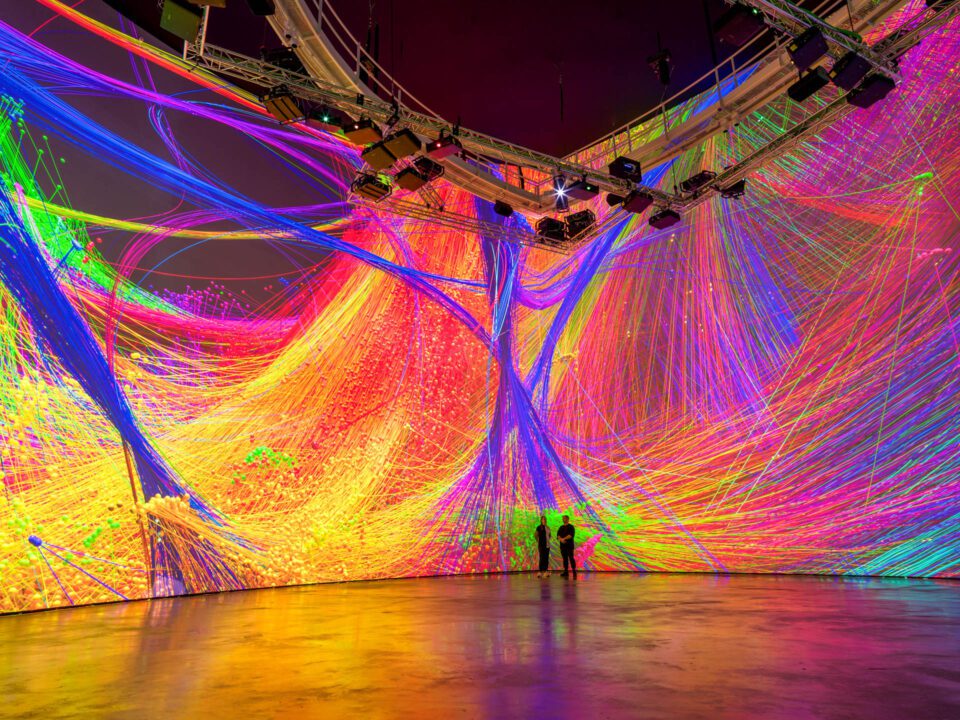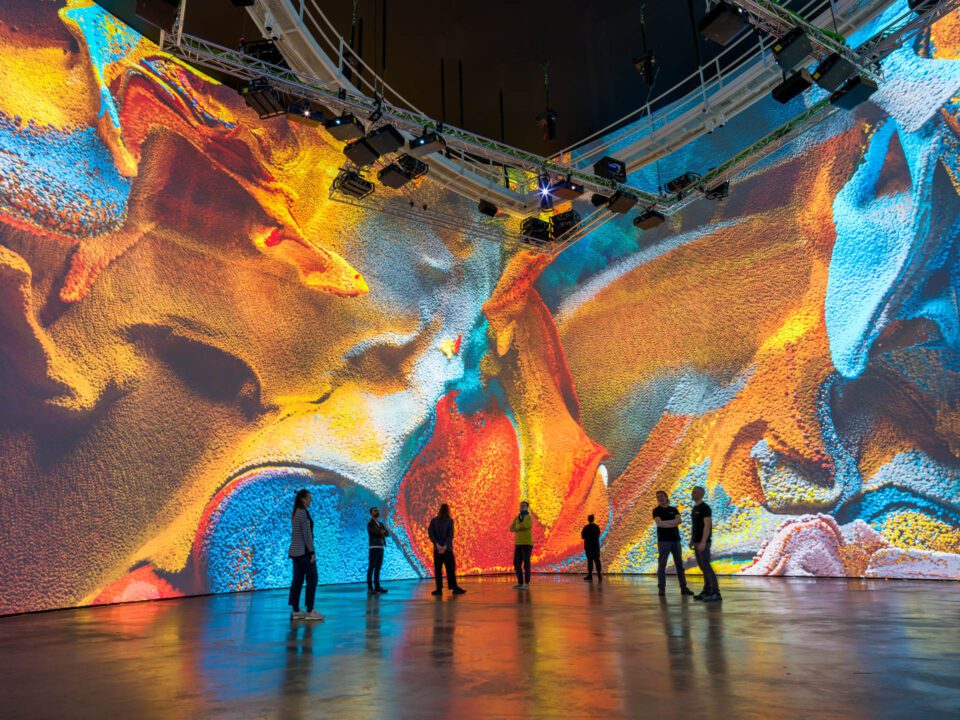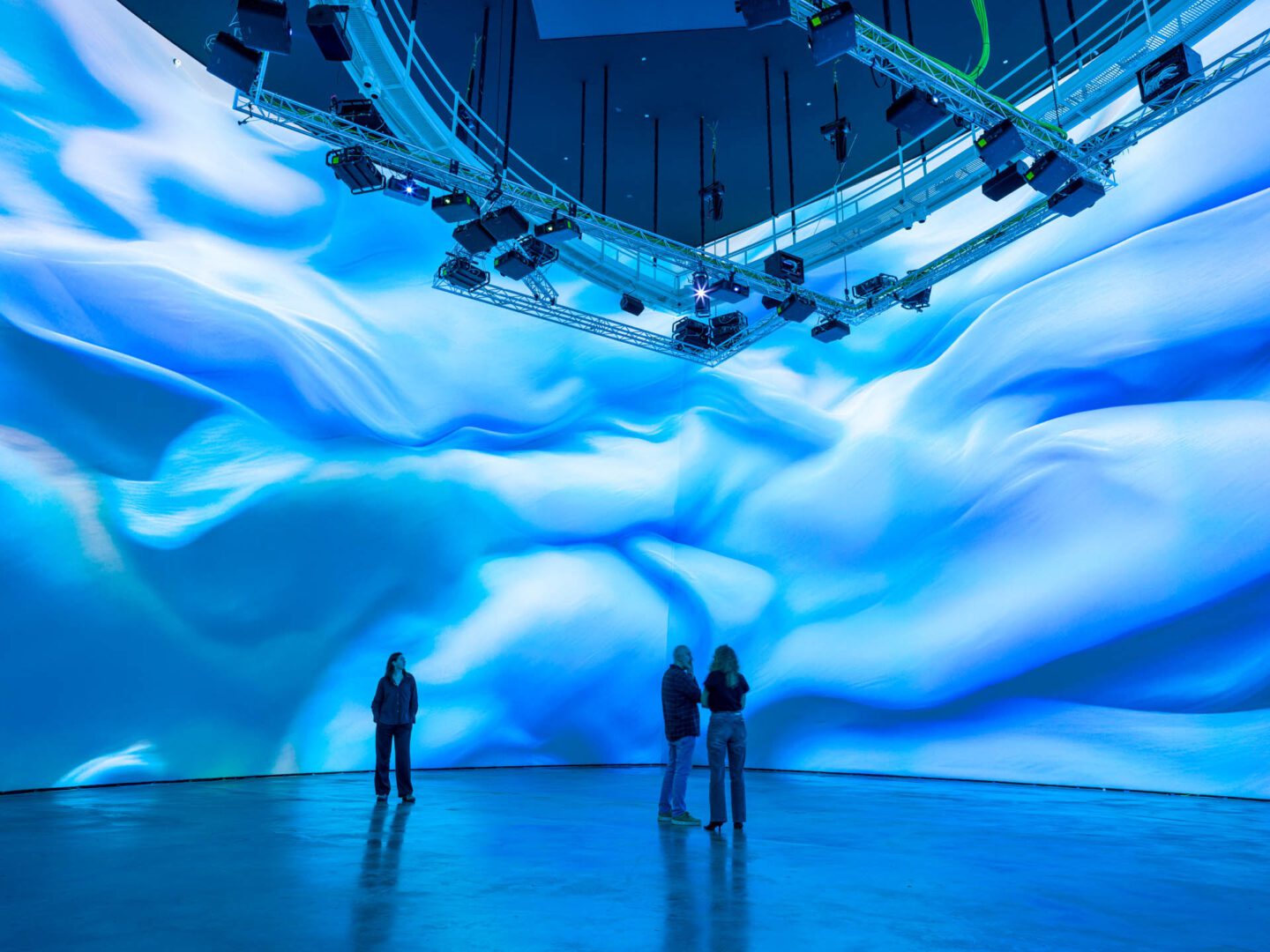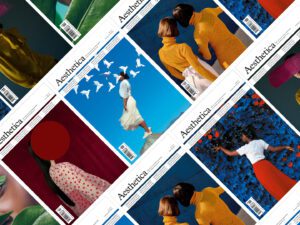The Guggenheim Museum Bilbao is one of the most recognisable institutions in the world. Its glistening titanium structure, designed by Canadian American architect Frank Gehry (b. 1929), is a global landmark. Crucially, the building is considered the catalyst for the famed “Bilbao effect” – putting the Spanish city firmly on the art map in 1997. It’s a case study in urban renewal, welcoming 1.3 million visitors in 2024.
Beyond Bilabo, Gehry is an hugely influential postmodern architect, renowned for his work on a number of key cultural venues including the Fondation Louis Vuitton, Paris; Vitra Design Museum, Weil am Rhein; and Walt Disney Concert Hall, Los Angeles. Now, his architecture is at the centre of a new multi-sensory installation at Guggenheim Museum Bilbao. Titled Living Architecture, and created by internationally acclaimed media artist Refik Anadol (b. 1985), it reimagines open-access imagery, sketches and blueprints of Gehry’s projects using Artificial Intelligence. It asks: what would happen if architecture could dream?

Based in Los Angeles, Anadol leads Refik Anadol Studio (RAS), a practice at the forefront of algorithmic art and data-driven narratives. RAS’s work examines the challenges and possibilities of ubiquitous computing, exploring “what it means to be human in an era of machine intelligence.” Living Architecture debuts the studio’s innovative Large Architecture Model, and the result is an all-encompassing experience of sight and sound. The piece synthesises data into continuously evolving visuals – from recognisable architectural forms to totally abstract shapes and textures. Visitors will encounter a canvas of colour and light that is “never static and remains in perpetual transformation.” Moreover, the installation is accompanied by a custom soundscape by Kerim Karaoglu, which integrates AI-generated audio with recordings from within the museum. Anadol has long been interested in “machine hallucinations”, and Living Architecture feels like a natural successor to Unsupervised (2022-2023), which reinterpreted the vast catalogue of New York’s Museum of Modern Art: almost 200,000 modern and contemporary works spanning 200 years.

Living Architecture opens amidst roaring debate about the place of AI within the arts. Anadol is a pioneer and champion of the aesthetics of machine intelligence, and previously told Aesthetica that he is “excited and happy to share what AI means for creativity and how it can be used for good.” The artist wants to push the boundaries of interdisciplinary creativity, and is “hopeful for a future where symbiotic relationships with machines offer us greater insights, knowledge and power to advance humanity.” Moreover, this show is pitched as “a testament to the ethical and creative use of machine intelligence in contemporary art … presenting AI not as a tool of replication but as a medium of imagination.” It is built upon ethically sourced data and powered by sustainable computing practices, in an attempt to present a conscientious approach to this kind of digital creation. Overall: this is an ambitious project that isn’t afraid to tread new ground.
Living Architecture is the inaugural exhibition in Guggenheim Museum Bilbao’s new in situ series, which will feature ambitious experiential projects by contemporary sculptors, multimedia and installation artists.
in situ: Refik Anadol is at Guggenheim Museum Bilbao until 19 October 2025 | guggenheim-bilbao.eus
Image Credits: Refik Anadol Studio, Installation view of Living Architecture: Gehry at the Guggenheim Museum Bilbao. © Refik Anadol, Bilbao 2025.





